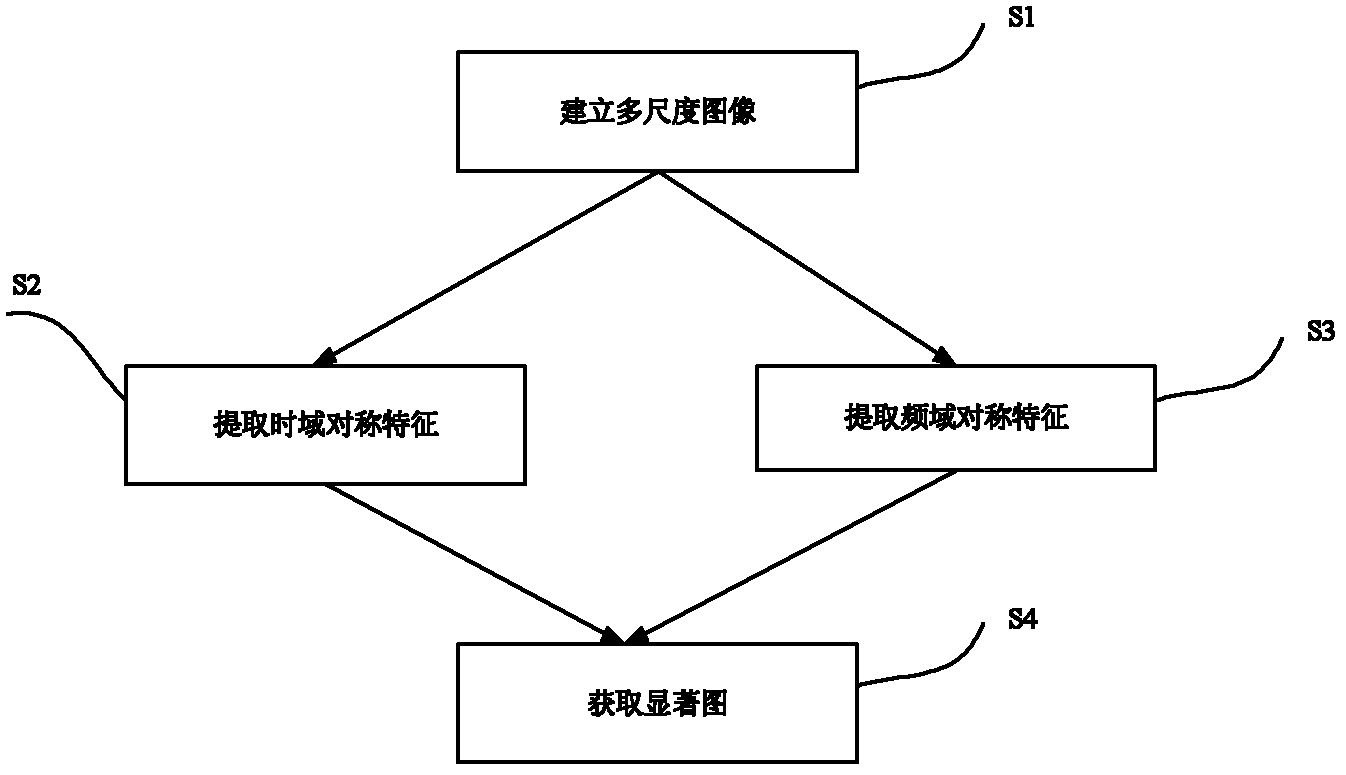Symmetry property-based method for detecting salient regions of images
A technology for region detection and symmetric graphs, applied in the field of computer vision
- Summary
- Abstract
- Description
- Claims
- Application Information
AI Technical Summary
Problems solved by technology
Method used
Image
Examples
Embodiment 1
[0015] Embodiment 1: Take the symmetric image detection of an artificial image as an example.
[0016] Such as figure 2 As shown in a, first construct an image of a circle containing an inscribed square as the target image, and the image size is 181×181. The process of the specific detection method is as follows: figure 1 As shown, the specific process is as follows:
[0017] S1. Create a multi-scale image for the target image. Here, the Gaussian pyramid model is used to establish a multi-scale image, and the information at different scales of the image is extracted, that is, the target image is down-sampled step by step. After each sampling, the image is Gaussian smoothed to reduce noise interference. A total of five samplings are performed here to obtain five images of different scales. Specifically, Gaussian images at different scales can be obtained by convolving the target image with the Gaussian kernel, and the scale factor in the Gaussian kernel controls the degree...
Embodiment 2
[0026] Embodiment 2: Take salient region detection of a natural image as an example.
[0027] This image, as well as the eye movement diagram, were downloaded from the online database provided by Neil.D.B.Bruce et al. The size of the images is 681×511, and the eye movement images are obtained by 20 subjects viewing the images freely. The flow chart of the specific detection method is as follows: figure 1 As shown, the specific process is the same as the first embodiment, except that in step S2, the radius of the isotropic symmetry operator is changed to 8 pixels.
[0028] image 3 It is a saliency map obtained by using the method of the present invention to actually detect natural images, a saliency map obtained by using the Itti model in the background technology, and a group of effect comparison maps of eye movement fixation maps. Among them: 3a. original image, 3b. human eye gaze map, 3c. saliency map detected by the method of the present invention, 3d. saliency map dete...
PUM
 Login to View More
Login to View More Abstract
Description
Claims
Application Information
 Login to View More
Login to View More - R&D
- Intellectual Property
- Life Sciences
- Materials
- Tech Scout
- Unparalleled Data Quality
- Higher Quality Content
- 60% Fewer Hallucinations
Browse by: Latest US Patents, China's latest patents, Technical Efficacy Thesaurus, Application Domain, Technology Topic, Popular Technical Reports.
© 2025 PatSnap. All rights reserved.Legal|Privacy policy|Modern Slavery Act Transparency Statement|Sitemap|About US| Contact US: help@patsnap.com



